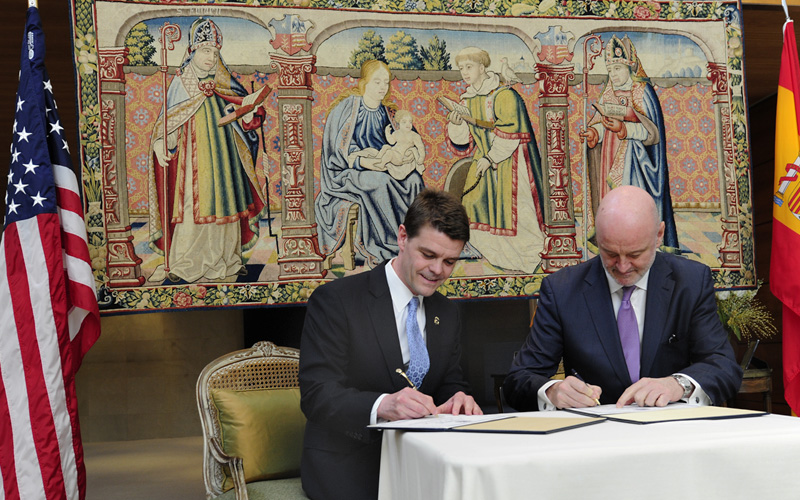Stolen 500-Year-Old Tapestry Returned to Spain

American authorities handed over a 16th-century tapestry that turned up in Texas last year, more than three decades after it was stolen from a church in northern Spain.
The woven, saint-filled altarpiece, thought to have been produced in the early 1500s, was swiped from a national cathedral in Roda de Isábena, in the Spanish province of Huesca, in December 1979. It finally resurfaced a few years ago, passing through the hands of European gallery owners and art dealers, until it was bought at an auction by a business in Houston for $369,000 in 2010.
U.S. Immigration and Customs Enforcement (ICE) seized the tapestry from that business back in November under the National Stolen Property Act. The investigation was part of an ICE operation dubbed "Hidden Relic," which aims to find and return stolen art, artifacts and other cultural property.
Five main figures are woven into the silk and wool piece: St. Ramon, the Virgin Mary with infant Jesus, Saint Vincent of Saragossa and Saint Valerius. Vincent and Valerius were a deacon-bishop duo persecuted for their faith in the early fourth century in Spain during the reign of Roman emperor Diocletian. Vincent didn't survive his jail time, which apparently included being roasted on a gridiron, and his body was left to be devoured by vultures. According to Catholic lore, ravens swooped in to protect Vincent's corpse from the scavengers. The saint was said to have been born in Huesca, a town near the Romanesque cathedral where the tapestry had been used as an altarpiece until it was stolen.
A repatriation ceremony took place at the Spanish ambassador's residence in Washington, D.C., on Wednesday (April 17) so that the tapestry could be officially returned to the government of Spain.
"The plundering of cultural property is one of the oldest forms of organized cross-border crime," ICE Director Morton said in a statement Wednesday. "Today's repatriation is an example of what can be accomplished when law enforcement partners from around the world work together in the effort to ensure that stolen and looted priceless cultural objects like this are returned to their rightful owner."
Follow Megan Gannon on Twitterand Google+. Follow us @livescience, Facebook& Google+. Original article on LiveScience.com.
Get the world’s most fascinating discoveries delivered straight to your inbox.



